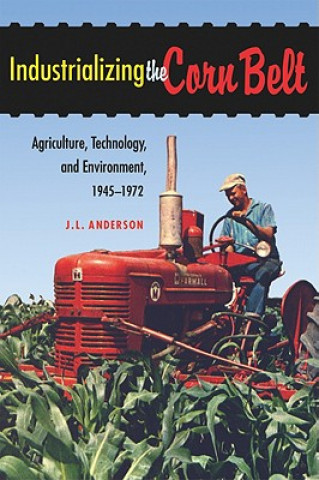
Kód: 04750187
Industrializing the Corn Belt
Autor J. L. Anderson
This book presents the history of industrializing agriculture from the perspective of the Corn Belt farmer.From the late 1940s to the early 1970s, farmers in the Corn Belt transformed their region into a new, industrial powerhouse ... celý popis
- Jazyk:
 Angličtina
Angličtina - Vazba: Pevná
- Počet stran: 248
Nakladatelství: Northern Illinois University Press, 2008
- Více informací o knize

Mohlo by se vám také líbit
Darujte tuto knihu ještě dnes
- Objednejte knihu a zvolte Zaslat jako dárek.
- Obratem obdržíte darovací poukaz na knihu, který můžete ihned předat obdarovanému.
- Knihu zašleme na adresu obdarovaného, o nic se nestaráte.
Více informací o knize Industrializing the Corn Belt
Nákupem získáte 77 bodů
 Anotace knihy
Anotace knihy
This book presents the history of industrializing agriculture from the perspective of the Corn Belt farmer.From the late 1940s to the early 1970s, farmers in the Corn Belt transformed their region into a new, industrial powerhouse of large-scale production, mechanization, specialization, and efficiency. Extension agents and implement manufacturers had urged farmers in this direction for decades, but it was the persistent labor shortage and cost-price squeeze following WWII that prompted farmers to pave the way to industrializing agriculture. Anderson examines the changes in Iowa, a representative state of the Corn Belt, in order to explore why farmers adopted particular technologies and how, over time, they integrated new tools and techniques.In addition to the impressive field machinery, grain storage facilities, and automated feeding systems were the less visible, but no less potent, chemical technologies - antibiotics and growth hormones administered to livestock, as well as insecticide, herbicide, and fertilizer applied to crops. Much of this new technology created unintended consequences: pesticides encouraged the proliferation of resistant strains of plants and insects while also polluting the environment and threatening wildlife, and the use of feed additives triggered concern about health effects to consumers.Anderson explains that the cost of equipment and chemicals made unprecedented demands on farm capital, and in order to maximize production, farmers either planted more acres with fewer but more profitable crops or specialized in raising large herds of a single livestock species. The industrialization of agriculture gave rural Americans a lifestyle resembling that of their urban and suburban counterparts. Yet the rural population continued to dwindle as farms required less human labor; many small farmers, unable or unwilling to compete, chose to sell out." Industrializing the Corn Belt" - based on farm records, cooperative extension reports, USDA publications, oral interviews, trade literature, and agricultural periodicals - offers a fresh look at an important period of revolutionary change in agriculture through the eyes of those who grew the crops, raised the livestock, implemented new technology, and ultimately made the decisions that transformed the nature of the family farm and the midwestern landscape.
 Parametry knihy
Parametry knihy
Zařazení knihy Knihy v angličtině Humanities History History: specific events & topics
771 Kč
- Plný název: Industrializing the Corn Belt
- Autor: J. L. Anderson
- Jazyk:
 Angličtina
Angličtina - Vazba: Pevná
- Počet stran: 248
- EAN: 9780875803920
- ID: 04750187
- Nakladatelství: Northern Illinois University Press
- Hmotnost: 499 g
- Rozměry: 234 × 155 × 23 mm
- Datum vydání: 31. October 2008
Oblíbené z jiného soudku
-

Man's Search for Meaning
176 Kč -

Women, Race & Class
290 Kč -

Pianist
279 Kč -

Out Of Place
303 Kč -
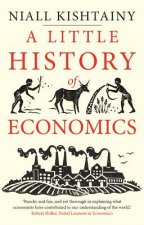
Little History of Economics
350 Kč -

Laughter in Ancient Rome
501 Kč -

Civilization and Capitalism, 15th-18th Century
1634 Kč -

Armies of Medieval Burgundy 1364-1477
395 Kč -

Night
250 Kč -

Society of the Spectacle
291 Kč -

Imperialism: The Highest Stage of Capitalism
196 Kč -

Man's Search For Meaning
410 Kč -

Homo Deus
274 Kč -

Ordinary Men
323 Kč -

Black Earth
378 Kč -

The Complete MAUS
487 Kč -

The Rape of Nanking
400 Kč -

Madness and Civilization
419 Kč -

Conquerors
323 Kč -

Stoned
276 Kč -

Twelve Years a Slave
90 Kč -

At Home
303 Kč -
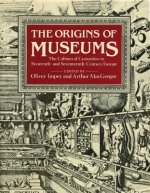
Origins of Museums
1370 Kč -

Measure of a Man
373 Kč -

Delirious New York
701 Kč -

Eichmann in Jerusalem
323 Kč -

Mein Kampf - The Ford Translation
1005 Kč -

Bloodlands
378 Kč -

Guns, Germs and Steel
378 Kč -

Cold War Submarines
892 Kč -

Fall of Public Man
410 Kč -

Che Guevara
548 Kč -

Dancing In The Streets
303 Kč -

Fix the Pumps
361 Kč -

Blue
1018 Kč -

Revolutionary Yiddishland
336 Kč -

Commandant Of Auschwitz
303 Kč -

Jewish State
289 Kč -

Eichmann in Jerusalem
357 Kč -

Reflections on the Revolution in France
250 Kč -
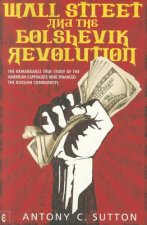
Wall Street and the Bolshevik Revolution
357 Kč -

Corgi Toys
407 Kč -

Night
276 Kč -
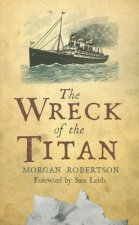
Wreck of the Titan
322 Kč -

McMafia
303 Kč -

Intimate History of Humanity
357 Kč -
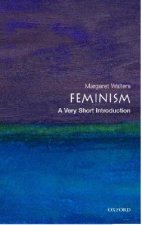
Feminism: A Very Short Introduction
250 Kč -

White Gold
357 Kč -

Twelve Who Ruled
600 Kč
Osobní odběr Praha, Brno a 12903 dalších
Copyright ©2008-24 nejlevnejsi-knihy.cz Všechna práva vyhrazenaSoukromíCookies







 Vrácení do měsíce
Vrácení do měsíce 571 999 099 (8-15.30h)
571 999 099 (8-15.30h)